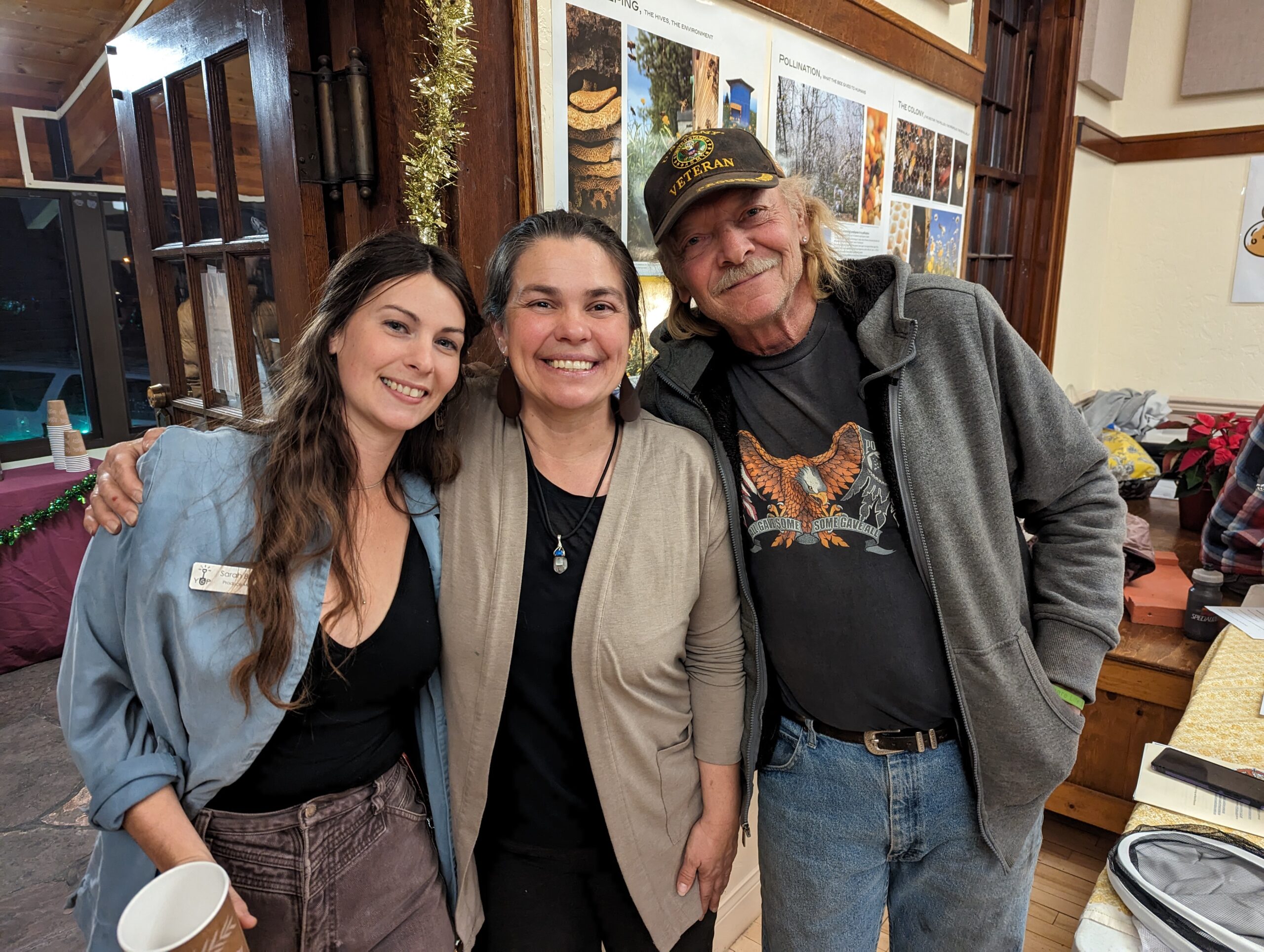Some information may be outdated.
Gardening education continues into the cold season during “Green Thumb Gathering”
On Monday, Dec. 11, the gardening community gathered for a “bouquet of botanical brilliance,” in the words of Youth Garden Project Executive Director Emily Roberson. That day, YGP hosted the first annual “Gardener’s Green Thumb” event, taking advantage of the slower winter season to bring together the wider gardening community to share tips, reflections, and hopes for the next year.
A resource fair full of information lined the walls at the Moab Arts and Recreation Center, where various organizations shared their specific knowledge, from how to wash your vegetables for food safety to chicken raising, composting, and water-wise gardening.
Moab Community Gardens promoted its three community gardens in town—East Bench, Our Village, and Wabi Sabi—as well as the new and under-development Arroyo Crossing Garden. The final MoCom volunteer workday of the season will take place on Saturday, Dec. 16 from 9 a.m. to 12 p.m. at the Wabi Sabi garden, and will also be a party to celebrate the departure of MoCom manager Becky Mann (if you’re interested in helping shape the future of MoCom Gardens, email mocomgardens@gmail.com). This event will be a great gathering for gardeners finishing their volunteer hours, and is open to community members who want to learn more about the gardens, which serve 50 gardeners and their families every year.


Our Village Community Center and Sego Lily Children’s Garden also promoted an event on Saturday: from 11 a.m. to 3 p.m., the garden will be hosting its first annual “WinterFaire.” There will be crafts, such as candle making, and refreshments, like hot cocoa and soup. (Our Village hosts MoCom, and also manages its own garden.)
The night ended with a panel discussion with YGP’s farm and produce managers, Ben Menard and Sarah Bowen, local farmer and florist Jess Oldham, Easy Bee Farm’s director Rhonda Gotway Clyde, Alice Drogin, owner of Canyon Nursery in Castle Valley, and Utah State University Extensions’s Cory Farnsworth. Panelists shared their biggest successes and challenges and recommendations for next year.
On many people’s minds were pests and diseases. One solution is to introduce all-purpose predators–like green lacewings, assassin bugs, and beneficial nematodes—to eat other pests. Lady bugs—which eat other pests—are best introduced in the cool temperatures of the morning so that they stay crawling around and don’t fly away, Drogin said.
Another challenge gardeners experience is powdery mildew. Gotway Clyde had this on Easy Bee’s carrots and she cut off all the carrot tops and burned them to rid the garden of the disease.

While some variables are unpredictable, like the weather, others can unfortunately be counted on, like squash bugs. The whole room lamented the presence of squash bugs and Menard offered a technique he used for zucchini at YGP: flooding the plants so the bugs crawl up the stem, and then sucking them up with a shopvac. Squash can also be planted later in the season, in order to reduce overlap with the larval stage of the squash bugs. Squash bugs can be introduced from organic unwashed squash from the grocery store, so Farnsworth suggested having a “program to make sure no one brings squash that are potentially infected to your house.” Bowen also credited the reduction in pests at YGP to planting beautiful orange marigolds at the end of the garden rows.
Many expert gardeners suggested gardeners do soil testing, which can be done with a kit bought online, or by sending a soil sample into a lab in Logan (Farnsworth encouraged anyone who was interested to contact him at cory.farnsworth@usu.edu). Fall and winter, before the frost arrives, is the best time to amend the soil with mulch and maybe sulfur (in other words, around now). Amendments that are too saline can cause a drought in your soil, according to Farnsworth.
Oldham reflected on a successful growing season thanks to a good plan, and encouraged gardeners to get out the graph paper now and start plotting in plants. Crops should be rotated and not planted in the same place, Farnsworth said. Gotway Clyde said the most important thing to do right now is to dream, look at seed catalogs, and talk to friends about their garden visions.
It was an educational night filled with humble and happy gardeners. Roberson celebrated the wealth of knowledge in the room and suggested finding a mentor in the community. There is surely a rich resource of gardeners in Moab as shown by the turnout!
Appreciate the coverage? Help keep local news alive.
Chip in to support the Moab Sun News.





